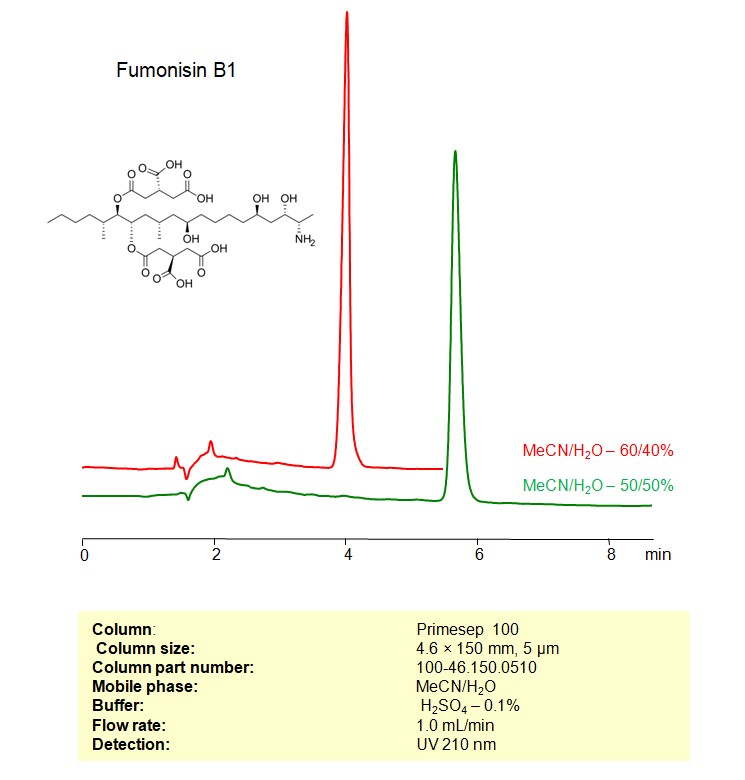
| CAS Number | 116355-83-0 |
|---|---|
| Molecular Formula | C34H59NO15 |
| Molecular Weight | 721.8 |
| InChI Key | UVBUBMSSQKOIBE-DSLOAKGESA-N |
| LogP | -0.5 |
| Synonyms |
|
Applications:
HPLC Method for Analysis of Fumonisin B1 on Primesep 100 Column
October 6, 2023
HPLC Method for Analysis of Fumonisin b1 on Primesep 100 by SIELC Technologies

High Performance Liquid Chromatography (HPLC) Method for Analysis of Fumonisin b1
Fumonisin B1 is a type of mycotoxin produced by Fusarium molds, particularly Fusarium verticillioides and Fusarium proliferatum. These molds commonly infect corn and other crops, and through these, fumonisin B1 can enter the food chain. This toxin is found worldwide, and it’s especially a concern in areas where corn is a staple food.
Fumonisin B1 is a notable mycotoxin due to its stability, widespread occurrence, and potential to cause harm to animals and humans. Monitoring and managing levels of this toxin in food products is essential to safeguard public and animal health.
Fumonisin B1 can be retained, and analyzed on a Primesep 100 mixed-mode stationary phase column using an isocratic analytical method with a simple mobile phase of water, Acetonitrile (MeCN), and a sulfuric acid as a buffer. This analysis method can be detected using UV at 210 nm.
| Column | Primesep 100, 4.6 x 150 mm, 5 µm, 100 A, dual ended |
| Mobile Phase | MeCN/H2O |
| Buffer | H2SO4 -0.1% |
| Flow Rate | 1.0 ml/min |
| Detection | UV 210 nm |
| Class of Compounds | Drug |
| Analyzing Compounds | Fumonisin b1 |
Application Column
Primesep 100
Column Diameter: 4.6 mm
Column Length: 150 mm
Particle Size: 5 µm
Pore Size: 100 A
Column options: dual ended


